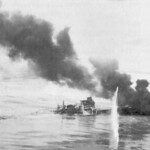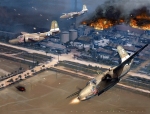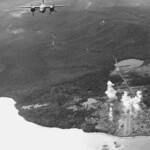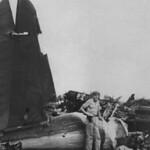As 1945 opened in the Pacific Theater, the Allies were advancing through the Philippines. Their next major target would be a three-unit attack on the Japanese stronghold of Clark Field on January 7th. At the time, the Japanese had put more than 400 antiaircraft guns in the area, which would make the planned 120+ A-20 and B-25 raid more challenging. Three bomb groups, the 345th, 312th and 417th, would split into formations and fly an “X” pattern over Clark Field. Above them, two P-38 squadrons would keep an eye out for enemy planes.
Upon arriving at the mountain pass that stood between the crews and Clark Field, heavy clouds blocked their path. The formation split up in the thick clouds as pilots navigated through the pass, temporarily invisible to each other. Emerging on the other side of the clouds, the 312th’s flight leader, Lt. Joseph Rutter, and his wingman, Lt. Jones, arrived at Clark Field without the rest of their formation. Rutter feared that he might have arrived late and began his run on Clark Field—alone. Jones had chosen to circle back and rejoin the formation, which was about a mile behind him and Rutter.
As Rutter made his pass over the target area, he heard machine gun fire hit the tail of his A-20 and his gunner, M/Sgt. Wilfred Boyd, alerted him of the B-25s coming in from the left. One of the B-25 pilots, Capt. Floyd Fox, watched with growing alarm as Rutter, dropping parafrags, was about to cross his path. Just in time, the parafrags ran out and Fox was able to continue his run without incident. Rutter finished his run and joined several A-20s for the flight back to Tanauan. Reflecting on the events, Rutter said, “Strangely, no question was ever raised about the A-20 which got in front of the parade and the pilot responsible. Considerable wonder was expressed, however, about the interesting pictures recorded by Boyd’s camera when the series of 24 exposures were posted on the wall of the 389th Squadron’s intelligence office.”

Lt. Rutter’s A-20 took this photograph of the B-25 flown by Floyd N. Fox of the 499th Bomb Squadron maneuvering to avoid the parafrags released from Rutter’s aircraft.
Finally, the first formation of the 312th began a run over Clark Field. “At the turn-in point the B-25s wound up between us,” 386th Squadron 2/Lt. Bill A. Montgomery wrote, “The result was that I came in behind several, and as I traversed the target area, I overran them en route. It was a mess.” The slower B-25s were being overshot by the A-20s and ended up on the receiving end of the parafrags being dropped from above. “…after getting ahead it was my turn to receive [the B-25’s] bouncing tracers, not to mention the parafrags and various assortment of other bombs being delivered.” In short, it was pure chaos.

Aircraft from the first wave are seen attacking Clark Field on January 7th. The tail of a wrecked G4M Betty bomber from 261 Kokutai is at center left. The gray wreck at lower center is a Ki-46 Dinah reconnaissance aircraft.
Not only were the bombers being shot at by the Japanese from below, Zeros were dropping phosphorus bombs on them from above. Fortunately for the bombers, the phosphorus bombs did not explode until after the planes had already flown out of harm’s way. Soon enough, it was time to leave Clark Field and turn for home. Congested air space and chaos aside, the attack was determined to be a success. A total of 19 Japanese fighters and 12 bombers were destroyed. Clark Field was no longer a major obstacle for the Allies. Between all three groups, 11 planes were lost. Two days later with little opposition, the American invasion force landed at Lingayen Gulf.


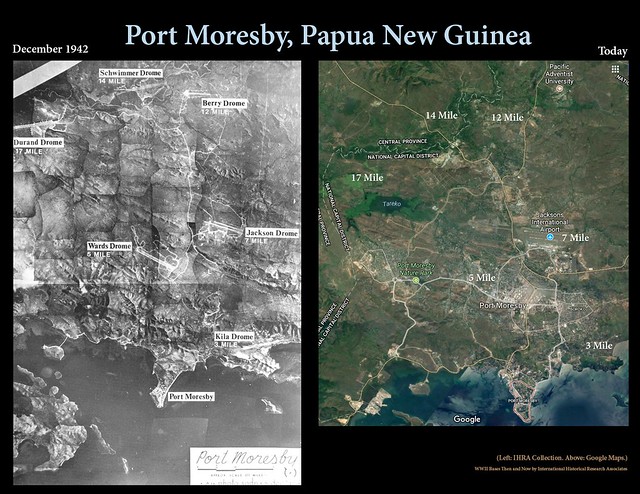
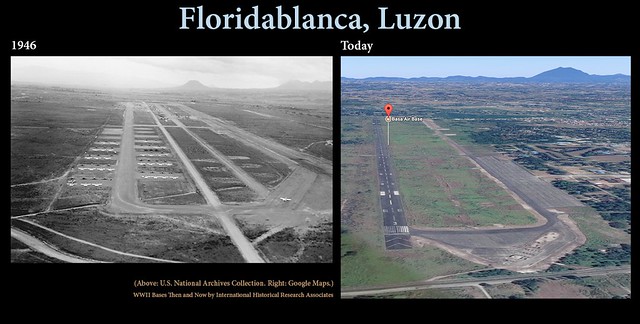


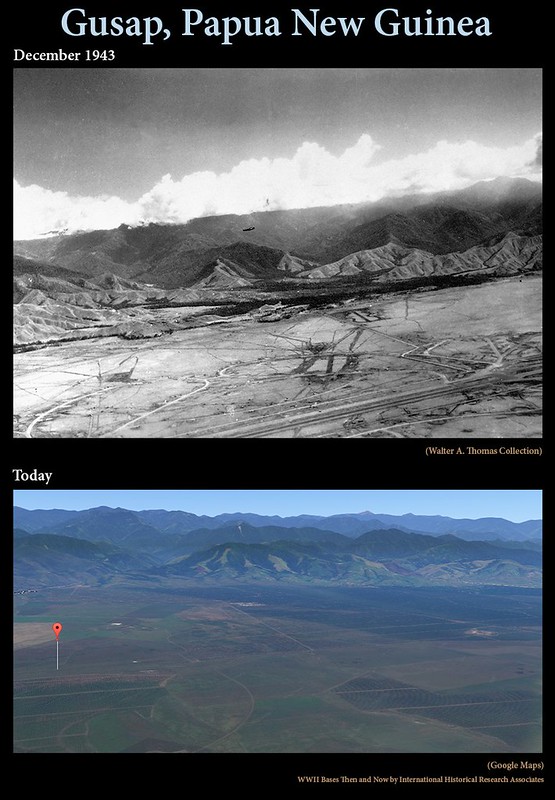











 7.
7. 









 7.
7. 


